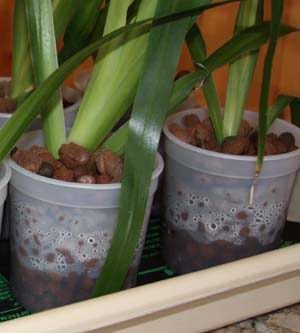Supporting hobby-, institutional-, and commercial growers with quality products and solid scientific information since 1994.
[To avoid losses and damage over the Holiday rush, we have suspended shipping until January 5th.]

[To avoid losses and damage over the Holiday rush, we have suspended shipping until January 5th.]

I have been growing orchids for over 40 years, and am the creator of semi-hydroponics, so likely have more experience with it than most, but that does not mean I cannot learn something new to improve things! This is in that category.
The concept of using bottom heat is nothing new. As someone pointed out on an orchid forum – that’s what Spring is. The sun warms the soil and tells the plants when to “turn on” their new growth. The use of heat pads under flats of seeds is also a long-used technique to accelerate germination. The same concept holds in semi-hydroponics, as well, being a particularly good way to accelerate root growth and acclimation.
Plants’ growth rates are predominately controlled by temperature – the warmer, the faster, to a point. That might lead one to think that cranking up the thermostat in the growing area is a good concept, and to an extent, it is. However, growing plants warmer if the light level is not commensurate will lead to soft, leggy growth, less-sturdy than is good for the plants. (That is, by the way, why it is not a good idea to use a programmable thermostat in a greenhouse – it is better to set a minimum temperature and let the sun do the extra heating.)
So how do we accelerate root growth without getting the legginess we don’t want? Heat the root zone directly.

An inexpensive, horticultural heat mat, placed under the pots, will keep the pot, reservoir, and medium – the whole root zone – warmer than the surrounding environment. Additionally, by increasing the evaporation rate of the liquid, the medium above the reservoir stays moist and the free space is boosted to maximum humidity, the perfect environment to favor root growth.

The photo above shows some Neomarica gracile (“Apostle Plant”) keikis being rooted in S/H culture on a heat mat. The photo was taken in the morning, after a 50°F night. The plants were rootless when planted, but were fully established and moved to the greenhouse only two weeks later.
Bottom heat is also great for in-home growers in cold months. Phalaenopsis, for example, don’t like being cold, but by keeping their root systems warm, they are easily able to tolerate cooler winter nights.